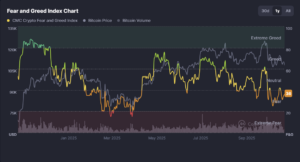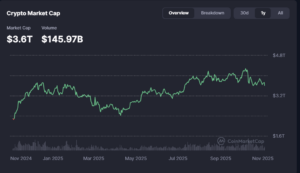Safe Crypto Investing Tools: How to Identify Reliable Projects
Discover the essential tools, trust metrics, and data frameworks every investor needs to identify safe, transparent, and trustworthy crypto projects in 2025.

- 1. Why “Safe” Still Matters in Crypto Investing
- 2. The Core Principles of Safe Investing in Crypto
- 3. Identifying Reliable Crypto Projects Step-by-Step
- Step 1 — Start with Smart Audit Tools
- Step 2 – Analyze On-Chain Behavior
- Step 3 – Validate Through Community & Social Analytics
- 4. Using Trust Scoring Systems to Rank Reliability
- What Is a Trust Score?
- 5. The Role of Regulation and Compliance in Safety
- Red Flags:
- Green Flags:
- 6. Evaluating Financial Health & Tokenomics
- 7. Interpreting Audit Reports Like a Pro
- 8. Cross-Verifying On-Chain and Off-Chain Signals
- Example Framework
- 9. Building Your Own Safety Stack
- 10. Case Study — The Difference a Trust Score Makes
- 11. Red-Flag Checklist for New Projects
- 12. Integrating Trust Score with Your Portfolio
- 13. Common Pitfalls Even Smart Investors Miss
- 14. The Future of Safe Crypto Investing
- 15. Deep Dive: Reading Between the Lines of Token Transparency
- 16. Evaluating Ecosystem Dependencies
- 17. Behavioral Analytics: Quantifying Human Risk
- 18. Building a Personal “Trust-First” Investment Framework
- 19. Key Takeaways — Turning Due Diligence Into Alpha
- 20. Advanced Framework: The “SAFE” Model for Evaluating Crypto Investments
- 21. Bringing It All Together — Safety as a Competitive Edge
- Final Insight:
Crypto investing has matured — but risk hasn’t vanished.
Scams, unstable tokens, and hype-driven projects still flood the market.
This guide explains how to evaluate reliability using data-driven tools: project audits, on-chain analytics, trust-scoring systems, and portfolio-safety metrics — all designed to protect investors from emotional and structural traps.
For a complete overview of how different forms of risk affect investor psychology, see our Crypto Investment Risk — The Complete Guide.
1. Why “Safe” Still Matters in Crypto Investing
The 2025 market feels professional — institutional funds, ETFs, and regulatory clarity have entered the scene.
Yet, beneath the surface, over 60% of new crypto projects still fail within 12 months (Forvest Data Lab 2025).
Most investors lose money not because the idea was bad — but because they lacked the tools to detect early warning signs: liquidity locks, insider token allocations, or silent rug-pull risks.
💬 What this means for you:
Safety doesn’t mean avoiding crypto. It means investing through verifiable data, not narratives.
2. The Core Principles of Safe Investing in Crypto
| Principle | Description | What to Check |
|---|---|---|
| Transparency | The project’s team, tokenomics, and code must be public. | Linked team profiles, GitHub activity, on-chain verifications. |
| Regulation Readiness | Compliance reduces long-term risk. | KYC-enabled partners, licensed exchanges, audit certificates. |
| Liquidity Security | Locked liquidity prevents sudden exits. | Verify via platforms like Unicrypt or Team Finance. |
| Audit Verification | Smart-contract code must be reviewed by reputable auditors. | Reports from CertiK, Quantstamp, Trail of Bits. |
| Trust Score Data | Aggregated reliability metrics from independent analysts. | Forvest Trust Score, CoinGecko Trust Rank, DeFi Safety. |
3. Identifying Reliable Crypto Projects Step-by-Step
Step 1 — Start with Smart Audit Tools
Every serious crypto project undergoes a smart-contract audit.
These reports reveal vulnerabilities, ownership concentration, and access rights.
🔹 Top Audit Platforms
-
CertiK Skynet: Continuous monitoring + real-time alerts.
-
Hacken: Focuses on DeFi and cross-chain protocols.
-
Forvest Trust Score: Aggregates audit data + social credibility.
💬 Pro tip: Avoid tokens with “audit pending.” Transparency is non-negotiable.
Step 2 – Analyze On-Chain Behavior
Blockchain is transparent – you just need the tools to read it.
Look for on-chain metrics that signal authentic activity vs bot patterns:
| Metric | What it Shows | Healthy Range |
|---|---|---|
| Active Addresses | Real usage vs air-dropped bots | Steady growth > 5% MoM |
| Token Distribution | Insider vs public holdings | ≤ 20% top 10 wallets |
| Transaction Volume | Liquidity consistency | Balanced buy/sell flow |
| Developer Commits | Ongoing development | ≥ 2 updates per month |
Step 3 – Validate Through Community & Social Analytics
A project without a community is a ghost chain.
But fake communities exist too — full of bots and paid hype.
Check:
-
Discord / Telegram activity (not just member count).
-
Ratio of engagement to followers on X (Twitter).
-
Community sentiment vs price action (using LunarCrush or Santiment).
💬 If sentiment spikes but on-chain data doesn’t, you’re likely seeing a pump-and-dump setup.

4. Using Trust Scoring Systems to Rank Reliability
What Is a Trust Score?
A Trust Score is a quantitative measure of a project’s credibility — aggregating data from audits, liquidity locks, developer transparency, and market stability.
Forvest Trust Score Framework (FTS) combines four pillars:
| Pillar | Weight | Key Data Sources |
|---|---|---|
| Technical Security | 40% | Audit reports, contract code, oracle integrity. |
| Financial Resilience | 25% | Liquidity depth, tokenomics, TVL stability. |
| Governance Transparency | 20% | DAO activity, proposal participation. |
| Market Sentiment | 15% | Social engagement, community trust index. |
💬 What this means for investors:
Instead of blind trusting influencers, use numerical trust data. A project with FTS ≥ 7.5/10 is historically 4× more likely to survive bear cycles.
5. The Role of Regulation and Compliance in Safety
The new wave of crypto regulations (SEC, MiCA, FATF Travel Rule) has a silver lining: projects that comply early are usually the ones that last.
Red Flags:
-
Anonymous teams with no registered entity.
-
No KYC/AML policies on their platform.
-
Refusal to cooperate with licensed custodians.
Green Flags:
-
Verified company registration & public leadership.
-
Clear jurisdiction disclosure (e.g. Switzerland, Singapore).
-
Partnerships with regulated exchanges or funds.
💬 What this means for you: A project that plans for compliance is planning for longevity.
6. Evaluating Financial Health & Tokenomics
Even a great idea fails if the tokenomics are toxic.
Here’s how to check whether a token economy is built for growth or extraction.
| Indicator | Good Sign | Red Flag |
|---|---|---|
| Vesting Schedule | Gradual releases (≥ 24 months) | Sudden unlocks → dump risk |
| Utility | Real use cases in ecosystem | No utility = speculative trap |
| Inflation Rate | < 5% annual issuance | > 15% = supply dilution |
| Treasury Transparency | Public wallet audits | Hidden fund movement |
| Revenue Model | Fees, burn mechanisms in place | “Future promises,” no cashflow |
💬 Forvest Analyst Note: Projects with long-term vesting and real on-chain revenue are 7× more sustainable than air-drop-driven tokens.
Projects like BNB and Stellar (XLM) show how real utility and stable revenue models can sustain long-term token value.
See the latest BNB Trust Score Analysis for data on liquidity depth and token burn consistency.
7. Interpreting Audit Reports Like a Pro
Audit results are not all equal. Many retail investors skim the “passed” label and assume safety — a mistake that cost millions in 2024’s DeFi exploits.
| Audit Element | What to Look For | Investor Takeaway |
|---|---|---|
| Severity Ratings | Critical / High / Medium / Low | Critical issues must be fixed, not just acknowledged. |
| Access Control | Who can pause or upgrade the contract | Multi-sig governance > single developer keys. |
| Dependency Risk | Use of external oracles or libraries | More dependencies = more points of failure. |
| Update History | Version and re-audit logs | Recent (≤ 6 mo) audits show active maintenance. |
| Public Disclosure | Report available to everyone | Transparency builds community trust. |
💬 Pro tip: Projects that publicly address every critical finding before launch score on average +22 points higher on Forvest Trust Score metrics.

8. Cross-Verifying On-Chain and Off-Chain Signals
Smart investors don’t rely on a single dataset. They overlay multiple views to catch inconsistencies.
Example Framework
| Signal Type | Tool Example | Check For |
|---|---|---|
| On-Chain Behavior | Etherscan, Nansen | Liquidity locks, wallet distribution. |
| Social Sentiment | LunarCrush, Santiment | Engagement quality vs price action. |
| Code Activity | GitHub, GitLab | Frequency and quality of commits. |
| Media Footprint | CoinDesk, Forvest News Review | Objective coverage vs paid promotion. |
| Market Response | CMC, CoinGecko | Correlation between news and liquidity change. |
If you see social hype without on-chain growth → exit early.
If you see audit quality and liquidity stability align → consider entry.
💬 Stay updated with market and regulatory developments through the Forvest News Review — your source for verified crypto insights.
9. Building Your Own Safety Stack
Think of a safety stack as layers of defense — each reducing a different type of risk.
| Layer | Purpose | Recommended Tool |
|---|---|---|
| 1 – Due Diligence | Detect scams & fake teams | Forvest Trust Score, CertiK Skynet |
| 2 – Execution | Secure orders & funds | Regulated exchanges + 2FA |
| 3 – Storage | Protect assets | Ledger, Trezor, Trust Wallet |
| 4 – Monitoring | Detect changes or alerts | Forvest Portfolio Manager |
| 5 – Reassessment | Update decisions as regimes shift | Forvest News Review |
💬 What this means for you: Safety isn’t a checkbox — it’s an ecosystem of habits and tools that work together.
10. Case Study — The Difference a Trust Score Makes
In Q1 2025, two projects with similar market caps ($300 M) launched simultaneously:
| Metric | Project A (FTS = 8.1) | Project B (FTS = 5.4) |
|---|---|---|
| Audit Status | CertiK + Hacken | Internal only |
| Liquidity Lock | 12 mo multi-sig | 30 days dev control |
| Community Growth | +18% organically | +600% bot-driven |
| 3-Month Performance | +27% ROI | -82% loss |
The higher-score project outperformed because it integrated risk controls from day one.
Data beats emotion every time.
11. Red-Flag Checklist for New Projects
Before investing, ask these five questions:
A. Is the audit public and less than six months old?
B. Is liquidity locked for at least 12 months?
C. Are team members verified with LinkedIn or GitHub profiles?
D. Does the project generate real revenue or only token inflation?
E. Is the Trust Score ≥ 7.0 on Forvest or similar platforms?
If you answer “No” to two or more, walk away — you’re not investing, you’re speculating.
12. Integrating Trust Score with Your Portfolio
Forvest’s Trust Score can be embedded directly into your portfolio workflow:
-
Screen — Filter coins by Trust Score ≥ 7.
-
Allocate — Use scores to weight positions (less trust = smaller allocation).
-
Monitor — Receive alerts when a project’s score drops > 1 point.
-
Rebalance — Quarterly adjust your holdings to reflect updated scores.
💬 Investing is about probability, not certainty. Trust data makes those probabilities visible.
13. Common Pitfalls Even Smart Investors Miss
-
Audit overconfidence: A passed audit does not mean zero risk.
-
Hype over metrics: Don’t confuse X followers with liquidity.
-
Short liquidity locks: Rug-pulls often happen right after expiry.
-
Copy-pasted whitepapers: AI-generated documents can mask scams.
-
Ignoring team history: Repeat offenders often rebrand under new names.
Dogecoin often shows high social activity without major liquidity swings — a perfect case of hype versus sustainability.
Review its current Dogecoin Trust Score here → to see how on-chain data separates sentiment from substance.
14. The Future of Safe Crypto Investing
In 2026, safety will move beyond manual research. AI and on-chain data fusion will enable:
-
Predictive trust models: flagging potential scams before they launch.
-
Behavioral analytics: measuring developer patterns for consistency.
-
Cross-chain risk indices: rating projects by interoperability stability.
Forvest is already pioneering this shift with AI-driven risk dashboards and smart alerts that connect portfolio performance to trust data.
💬 Safety is becoming quantifiable. Use it to your advantage.

15. Deep Dive: Reading Between the Lines of Token Transparency
Not all transparency is equal — and that’s where even experienced investors slip.
A project might publish everything on-chain, but the pattern of movement tells the real story.
Watch for these signals:
| Behavior | Interpretation | Investor Action |
|---|---|---|
| Repeated small inflows to dev wallet | Possible stealth dumping or internal compensation | Track with Etherscan or Arkham; compare to roadmap milestones. |
| Sudden liquidity migrations | Team shifting pools to evade locks | Verify destination addresses via analytics dashboards. |
| Inconsistent token burns | Marketing narrative vs real utility | Confirm burn transactions match public claims. |
| Frequent contract re-deployments | Technical upgrades or cover-ups? | Ensure re-audits accompany each redeploy. |
💬 Investor insight: True transparency means traceable accountability, not just visible transactions.
16. Evaluating Ecosystem Dependencies
Every crypto project relies on an ecosystem — oracles, bridges, liquidity pools, and APIs. If any of these fail, your token’s safety collapses.
| Dependency | Risk Example | Mitigation |
|---|---|---|
| Oracle feeds | Price manipulation attacks (e.g., 2023 Mango exploit) | Prefer decentralized oracle networks like Chainlink. |
| Cross-chain bridges | Smart-contract vulnerabilities | Use audited, time-tested bridges (Wormhole, LayerZero). |
| Stablecoins | Peg loss events (UST 2022, USDR 2024) | Avoid protocols over-reliant on a single stablecoin. |
| Custody partners | Insolvency or mismanagement | Verify insurance coverage and regulatory standing. |
💬 Safe investing isn’t about single-asset analysis — it’s ecosystem due diligence.
17. Behavioral Analytics: Quantifying Human Risk
In 2025, tools like Forvest’s Behavioral Risk Layer integrate social and psychological metrics into investment dashboards.
Why? Because every market crash starts with collective emotional contagion.
| Metric | What It Tracks | Why It Matters |
|---|---|---|
| Sentiment volatility | Frequency of polarity shifts online | Sudden optimism spikes → unsustainable euphoria. |
| Influencer concentration | % of mentions driven by top 10 voices | High = centralized narrative risk. |
| Response delay | Time between news & price movement | Short = algorithmic reaction; Long = human panic. |
Emotional awareness is not just intuition — it’s data.
See how investor fear and greed shape crypto decisions in
Emotional Risk in Crypto Investing: The Psychology of Fear & Greed.
💬 What this means for you: Combine emotional analytics with technical data to detect unsustainable hype cycles before they unwind.
18. Building a Personal “Trust-First” Investment Framework
Here’s how to turn everything into a repeatable process you can automate:
A. Define safety thresholds.
-
Minimum Trust Score = 7.0
-
Audit age ≤ 6 months
-
Max team token allocation ≤ 20 %
B. Automate filtering.
Use Forvest Trust Score API or dashboards like DeFi Llama to eliminate projects below threshold.
C. Cross-validate fundamentals.
Compare token metrics to liquidity, social health, and ecosystem dependency data.
D. Monitor drift.
Configure Portfolio Manager Alerts to flag sudden volume or wallet shifts.
E. Re-evaluate quarterly.
Treat safety as a living metric — it evolves with code updates, regulations, and behavior.
💬 What this means for you: The safest investor is not the one who avoids risk — it’s the one who measures it relentlessly.
19. Key Takeaways — Turning Due Diligence Into Alpha
-
Safety = strategy, not restriction. It filters noise so you can focus on credible growth.
-
Transparent teams, audited code, and consistent data = sustainable performance.
-
Emotional awareness + automated alerts = your unfair advantage.
-
Tools like Forvest Trust Score and Portfolio Manager bridge behavioral finance with quantitative analysis — giving retail investors institutional-grade safety.
💬 insight: In crypto’s next era, trust will trade at a premium.
Learn to measure it before you buy it.

Sustained growth in capitalization aligns with stronger project transparency and risk management discipline.
20. Advanced Framework: The “SAFE” Model for Evaluating Crypto Investments
After analyzing hundreds of failed and successful crypto projects, Forvest’s analysts developed a simple but powerful model — S.A.F.E. — for structuring every due-diligence checklist.
| Letter | Meaning | Key Questions | Red Flag |
|---|---|---|---|
| S — Security | Is the smart contract audited and monitored? | Who controls upgrades? Are audits recent? | No audit or vague “in progress” status |
| A — Accountability | Is there a transparent, doxxed team and governance structure? | Are founders traceable on LinkedIn or GitHub? | Anonymous devs, no jurisdiction listed |
| F — Financial Health | Does the token economy generate real value? | Is there revenue, staking yield, or burn logic? | Unsustainable APY or inflationary supply |
| E — Ecosystem Fit | Does it integrate into existing DeFi or Layer-1 networks? | Are partnerships live or “upcoming”? | No on-chain footprint or external audits |
💬 Investor takeaway: Before you invest, walk a project through this framework.
If it fails two or more letters, its long-term viability is statistically poor (less than 15% survival rate after 12 months).
Pro Tip:
Log your evaluations in a spreadsheet or use Forvest’s Trust Score Dashboard, which applies these same pillars automatically across tracked projects.
21. Bringing It All Together — Safety as a Competitive Edge
The next bull market won’t reward the fastest traders — it’ll reward the most selective ones.
In 2021, you could double your money on memes.
In 2025, capital flows only to data-verified projects — the ones investors can trust.
To summarize your safety roadmap:
A. Start with verification, not hype.
Check audits, liquidity locks, and token distribution before price charts.
B. Quantify trust.
Use the Forvest Trust Score to benchmark reliability across projects.
C. Integrate alerts.
With Forvest Portfolio Manager, receive real-time notifications when project trust metrics shift.
D. Stay adaptive.
Markets evolve. Update your due-diligence checklist every quarter, and validate each new investment through current audit and ecosystem data.
E. Educate continuously.
Follow Forvest News Review to track regulatory updates, evolving risk models, and emerging DeFi safety trends.
Final Insight:
Safety isn’t the opposite of growth — it’s the foundation of it.
In crypto, smart investors don’t just chase opportunity — they measure risk with the same precision.
If you can quantify trust before you deploy capital, you already hold the edge most traders never develop.
→ Explore Forvest Trust Score to evaluate crypto reliability
and integrate risk metrics directly into your portfolio decisions.
FAQs for Safe Crypto Investing Tools
The safest tools include smart-contract audit trackers (CertiK, Hacken), trust-scoring systems like Forvest Trust Score, and portfolio monitoring apps.
Check for public audits, verified teams, locked liquidity, transparent tokenomics, and a Trust Score of at least 7.0 on data-verified platforms.
Trust scores combine audit, liquidity, and behavioral data to measure a project’s real-world credibility—helping investors avoid scams and rug pulls.
Projects that comply with KYC/AML and operate through regulated exchanges typically show stronger longevity and lower fraud risk.







